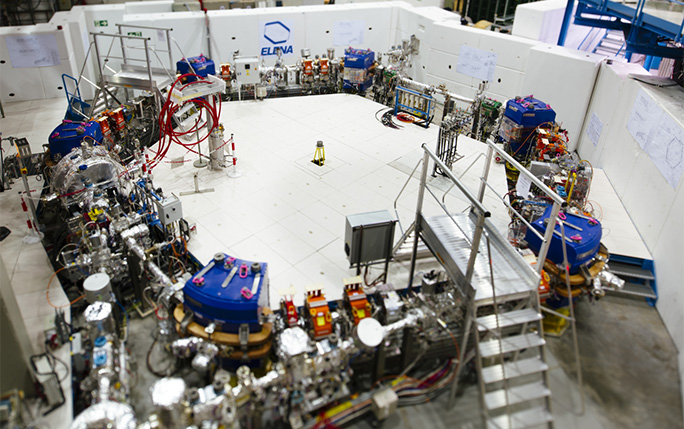CERN approves two new experiments to transport antimatter

Earlier this year it was reported that the BASE collaboration is developing a transportable antiproton trap for higher-precision antimatter measurements. They do this at CERN’s Antimatter Factory – the only place in the world where low-energy antiprotons (antimatter counterparts of protons) are produced. This month, the CERN Research Board approved the development of two new experiments to carry antiprotons from the Antimatter Factory to other facilities, for antimatter and nuclear-physics studies.
Within the AVA Network, R&D into beyond state-of-the-art beam handling, storing and analysis techniques paves the way for the design of novel low energy antimatter experiments. For example, a Fellow at GSI develops, builds and test a reservoir trap to deliver a well-defined number of antiprotons, and a Fellow at MPG, who is also a member of the BASE collaboration, focuses on advanced cooling techniques for protons and antiprotons in penning traps. These AVA projects contribute to research into an additional controllable source of antiprotons, making experiments independent of accelerator-beam cycles and shut-down periods.
The experiments now approved by CERN, to carry antiprotons to other facilities, are called BASE-STEP and PUMA and are compact enough to be transported in a small truck or van. BASE has been performing ever more precise antiproton measurements, but the precision of these measurements is limited by disturbances to the set-up’s magnetic field caused by the magnetic environment of the Antimatter Factory. BASE-STEP is a variant of the BASE set-up that has been designed to be carried to a facility at CERN or elsewhere, one that has a calmer magnetic environment and thus allows higher-precision measurements to be made. The device will feature a first trap to receive and release the antiprotons produced at the Antimatter Factory and a second trap to store the antiprotons.
PUMA is based on a different transportable antiproton trap system and has a different scientific goal. It aims to transport antiprotons from Antimatter Factory to CERN’s nuclear-physics facility, ISOLDE, for investigation of exotic nuclear-physics phenomena. It will consist of a first trapping zone to stop antiprotons, and a second trapping zone to host collisions between the antiprotons and radioactive atomic nuclei that are routinely produced at ISOLDE but decay too rapidly to be transported anywhere themselves.
Analysis of the outcome of these collisions will help researchers determine the relative densities of protons and neutrons at the surface of nuclei. These densities could reveal whether the nuclei have exotic properties such as thick neutron “skins” or extended halos of protons or neutrons around their core. Such knowledge could shed light on the interior of neutron stars.